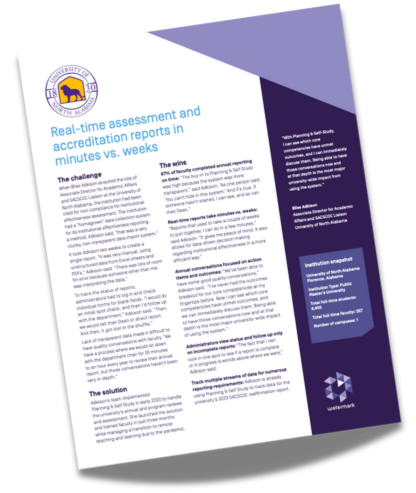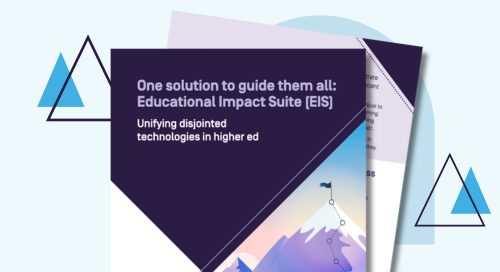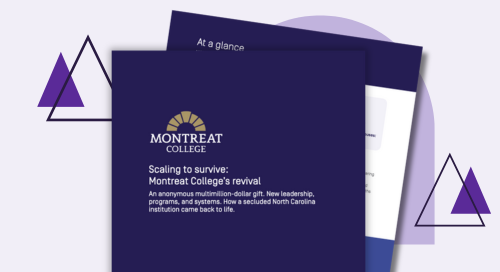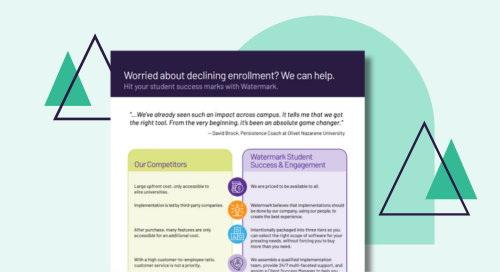Real-time assessment and accreditation reports in minutes vs. weeks at University of North Alabama
At a glance
University of North Alabama

“In addition to getting the promotion and tenure binders streamlined, it was helpful for the accuracy of our data. No more drawers full of flyers and papers that we accumulate all year, then spend a week or two before the deadline compiling an updated CV. If we keep up our data on activities, it’s there and we can use it in multiple reports.”
Bliss Adkison
Associate Director for Academic Affairs and SACSCOC Liaison – University of North Alabama
Save a copy of the University of North Alabama case study for later.
Download now

When Bliss Adkison acquired the role of Associate Director for Academic Affairs and SACSCOC Liaison at the University of North Alabama, the institution had been cited for non-compliance for institutional effectiveness assessment. The institution had a “homegrown” data collection system for its institutional effectiveness reporting, a method, Adkison said, “that was a very clunky, non-transparent data import system.”
It took Adkison two weeks to create a single report. “It was very manual, using unstructured data from Excel sheets and PDFs,” Adkison said. “There was lots of room for error because someone other than me was interpreting the data.”
To track the status of reports, administrators had to log in and check individual forms for blank fields. “I would do an initial spot check, and then I’d follow up with the department,” Adkison said. “Then, we would tell their Dean or direct report. And then, it got lost in the shuffle.”
Lack of transparent data made it difficult to have quality conversations with faculty. “We have a process where we would sit down with the department chair for 30 minutes to an hour every year to review their annual report, but those conversations haven’t been very in-depth.”
87% of Faculty Completed Annual Reporting on Time:
“The buy-in to Planning & Self-Study was high because the system was more transparent,” said Adkison. “As one person said, ‘You can’t hide in this system.’ And it’s true. If someone hasn’t started, I can see, and so can their Dean.”
Real-time Reports Take Minutes vs. Weeks:
“Reports that used to take a couple of weeks to pull together, I can do in a few minutes,” said Adkison. “It gives me peace of mind. It also allows for data-driven decision making regarding institutional effectiveness in a more efficient way.”
Annual Conversations Focused on Action Items and Outcomes:
“We’ve been able to have some good quality conversations,” Adkison said. “I’ve never had the outcomes bre akout for our core competencies at my fingertips before. Now I can see which core competencies have unmet outcomes, and we can immediately discuss them. Being able to have those conversations now and at that depth is the most major university-wide impact of using the system.”
Administrators View Status and Follow up Only on Incomplete Reports:
“The fact that I can look in one spot to see if a report is complete or in progress is worlds above where we were,” Adkison said.
Track Multiple Streams of Data for Numerous Reporting Requirements:
Adkison is already using Planning & Self-Study to track data for the university’s 2023 SACSCOC reaffirmation report.

Browse our resource library
See how our tools are helping clients right now, get in-depth information on topics that matter, and stay up-to-date on trends in higher ed.







